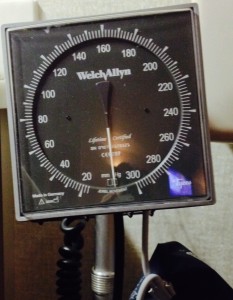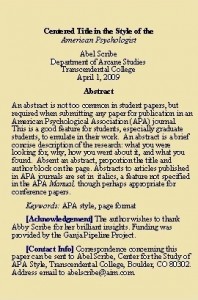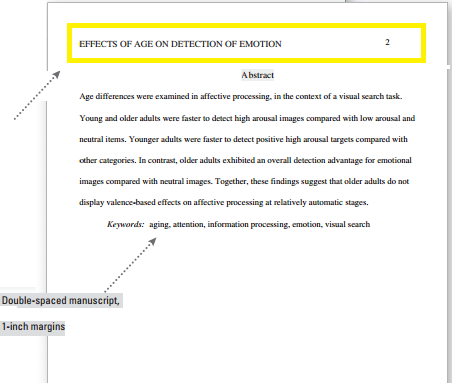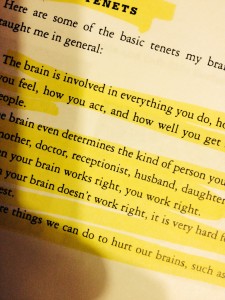
As I sit down on my comfy sofa to write blogs, she welcomes me like one of Grandmum’s warm oatmeal cookies…

…cushions made with just the right amount of butter and water, taken from the oven while still soft, enveloping my posterior as if to say, “There, now. You are safe, warm and loved.”
My couch; I love her so.
Whether you use one word or a whole sentence, personification (when not overdone) can make your writing relatable.
Most of us know the nature of people–what they are like, how they behave; but any time you apply human qualities to inanimate objects, you use personification.
You can achieve personification subtly; one well-placed human trait can personify your words and create a memorable image for your reader:
The stars winked at me as I embarked on my voyage.
I paused to listen with joy as the wind sang in my ears.
Stars winking? Wind singing?
If you’re someone who takes thing literally, you might find personification is not for you.

But don’t forget what is possible within your imagination!
You have experienced the stars and the wind as inanimate elements in your daily life. Now you add a “human” trait to deepen your familiarity, and, presto! Out comes a personification.
Similes, metaphors, and personification
Personification in the form of a word or a few words can also be considered a metaphor or a simile. In fact, some may say that all personifications are metaphors and similes, but not all metaphors and similes are personifications.
However, certain brands of personification do not qualify as similes, which happens when you clearly treat an inanimate object as if it were human (usually in fiction or maybe in a journal—used just for humor).
Tommy the Truck: a bittersweet story of personification

The following posts, adapted from my Facebook page, involve the ill health and eventual passing of my pickup truck; judging from the emotional reactions, comments, and LIKEs elicited from my posts on Tommy, well, my truck may as well have been human:
January 7th: Downtown Springfield: Tommy had to take a ride in an ambulance to a garage for a diagnosis tomorrow. Poor twuk has never been away from Mommy this long.

January 10th: Tommy made it through his surgery. He is still running roughly, however. As he limps down the road, I feel his pain.
 January 20th: Poor Tommy, my truck, had to be towed again from work last Thursday. He was in the truck hospital again and had computer board surgery. He got a used computer, but he will need to be replaced. His compression is poor. I will have to get a different vehicle in a month or so when I can afford it.
January 20th: Poor Tommy, my truck, had to be towed again from work last Thursday. He was in the truck hospital again and had computer board surgery. He got a used computer, but he will need to be replaced. His compression is poor. I will have to get a different vehicle in a month or so when I can afford it.
“Alas, poor Tommy (Yorick)! I knew him, Horatio…” (But I moved four times with all my stuff in his truck bed, and he is only a 4 cylinder.) Poor little guy.
My Facebook status updates for Tommy were not only met with an outpouring of LIKEs and comments, but with heartfelt wishes for Tommy to “get well soon.”

When later I announced Tommy’s poor prognosis, wishes for recovery becoming condolences, my Facebook friends didn’t disappoint:
.
…Tommy had lived a full life.
…May he rest in peace in junkyard heaven.
…Maybe he just wants to take early retirement.

So, in my case, on Facebook, personification worked on its audience and delivered the sympathy I probably had been craving at the time.
Still skeptical about the effectiveness of personification?
Let’s try an experiment.
Let’s remove personification from my post to a stripped-down (forgive me) version:

My truck broke down.
And its lackluster follow-up post:
My truck broke down, again.
How many LIKEs, comments, shares and sympathies might be warranted now?
I rest my case.
 As an aside…It’s not nice to “LIKE” something tragic, but people do it every day:
As an aside…It’s not nice to “LIKE” something tragic, but people do it every day:
“My father died.”
Susie likes your post.
Bad, bad, bad. Be careful.
REMEMBER: Use personification sparingly in writing that allows for a degree of individual flair.
Be sure you stay in context, too.

Where personification does not belong
Personification has no business poking its nose into serious reports…nor should personification butt in where scholarly writing is concerned… except possibly when writing in a style that might allow for or even reward personification (e.g. when your essay is about a genre that uses personification).
Thou shalt not commit a syntax error
Do not interject a phrase that is worded informally (meaning the same way you speak) using the syntax you developed from childhood until now. Resist the temptation to insert your brand of poetic flair into formal writing. If you simply cannot help yourself, do so at your peril.
Read up on syntax clashes and syntax errors, and you’ll find it can be quite technical. The least you need to know: stick with one style throughout your writing. Failing that, contact us for help with your scholarly writing.
And may your day be filled with all the glow of a kid with a lollipop.
 You have thoroughly researched your content. You’ve distilled your arguments into cogent and concise sections.
You have thoroughly researched your content. You’ve distilled your arguments into cogent and concise sections. Transitions can be easy to ignore–because they come so naturally. If your paper is a train, your thesis statement is the engine and your arguments are the cars.
Transitions can be easy to ignore–because they come so naturally. If your paper is a train, your thesis statement is the engine and your arguments are the cars. 

 While transitions typically come naturally in linear thought, there are many ways they can become lost in constructing a paper. Often times papers are not written in a linear fashion, or the order of arguments will be shifted from one draft to another. A transition appropriate from one argument to the next might not work when the order is rearranged.
While transitions typically come naturally in linear thought, there are many ways they can become lost in constructing a paper. Often times papers are not written in a linear fashion, or the order of arguments will be shifted from one draft to another. A transition appropriate from one argument to the next might not work when the order is rearranged.


 If you’re the sort of person who enjoys watching heads explode (and really, who isn’t?), next time you’re hanging out with a composition instructor or a high school English teacher, utter these two words, grab a bowl of popcorn and take a seat: passive voice.
If you’re the sort of person who enjoys watching heads explode (and really, who isn’t?), next time you’re hanging out with a composition instructor or a high school English teacher, utter these two words, grab a bowl of popcorn and take a seat: passive voice.
 First, the Abstract page is always page 2. Include a “running head” on it (a condensed, 50 character or less version of the title on the left, the page number on the right).
First, the Abstract page is always page 2. Include a “running head” on it (a condensed, 50 character or less version of the title on the left, the page number on the right).  “Lead us not unto temptation”
“Lead us not unto temptation”

 Issues like “ownership” of ideas and the ability to trace a line of argument through sources are also major reasons to stop and think the next time you cut and
Issues like “ownership” of ideas and the ability to trace a line of argument through sources are also major reasons to stop and think the next time you cut and Do you lack the motivation and energy to complete tasks (especially “boring” ones)? This can be a frustrating no-end battle for people with ADHD and other self-regulation spectrum conditions (autism is a condition that can impair your ability to get things done, too; sometimes
Do you lack the motivation and energy to complete tasks (especially “boring” ones)? This can be a frustrating no-end battle for people with ADHD and other self-regulation spectrum conditions (autism is a condition that can impair your ability to get things done, too; sometimes  If you live with a condition like ADHD, you know that you’re not dumb, lazy, or unwilling, even if other people might label you in this way. It might not take much physical/mental activity to exhaust you. ADHD is neurobiological, so you’re NOT imagining things. You feel lousy and have trouble keeping up with life’s demands because you have a real condition. Read
If you live with a condition like ADHD, you know that you’re not dumb, lazy, or unwilling, even if other people might label you in this way. It might not take much physical/mental activity to exhaust you. ADHD is neurobiological, so you’re NOT imagining things. You feel lousy and have trouble keeping up with life’s demands because you have a real condition. Read 
 Now July 1 may be have been a washout from every angle—but at least when you look back on it in your diary, you will know why:
Now July 1 may be have been a washout from every angle—but at least when you look back on it in your diary, you will know why:  Once you keep a daily record of these variables, you should begin to see some patterns after a few months. Your reward—you should be better able to predict when to “schedule” more cognitively demanding activities like writing papers.
Once you keep a daily record of these variables, you should begin to see some patterns after a few months. Your reward—you should be better able to predict when to “schedule” more cognitively demanding activities like writing papers.  If under scheduling is just too unrealistic, make it a priority to at least eat properly (please see below), sleep sufficiently, exercise as much as you can stand, follow a structured routine, and if you know toxic people/situations/places that trigger stress for you, avoid or minimize exposure if possible.
If under scheduling is just too unrealistic, make it a priority to at least eat properly (please see below), sleep sufficiently, exercise as much as you can stand, follow a structured routine, and if you know toxic people/situations/places that trigger stress for you, avoid or minimize exposure if possible.  Regular sleep patterns with relatively little deviation over weekends are essential in managing your condition. You know what happens when you stay up until 3 a.m. on a weekend when you are accustomed to an 11 p.m. bedtime during the work/school week. Monday morning will be even more of an ordeal, and you’ll likely feel irritable and exhausted. You will then be tempted to turn to heavily caffeinated and/or sugared fixes for a temporary boost and subsequent crash.
Regular sleep patterns with relatively little deviation over weekends are essential in managing your condition. You know what happens when you stay up until 3 a.m. on a weekend when you are accustomed to an 11 p.m. bedtime during the work/school week. Monday morning will be even more of an ordeal, and you’ll likely feel irritable and exhausted. You will then be tempted to turn to heavily caffeinated and/or sugared fixes for a temporary boost and subsequent crash.
 With ADHD and similar conditions, if you underestimate what you can do in a period of time, you will probably get it just right. Imagine that a task will take 3 times as long to finish, and you may be pleasantly surprised to find you have finished it sooner.
With ADHD and similar conditions, if you underestimate what you can do in a period of time, you will probably get it just right. Imagine that a task will take 3 times as long to finish, and you may be pleasantly surprised to find you have finished it sooner.  This strategy has been legendary for keeping people (especially easily distracted people) on task. Why do bosses exist in most workplaces? In large part, bosses babysit. When you go home, you sometimes need a sitter there, too.
This strategy has been legendary for keeping people (especially easily distracted people) on task. Why do bosses exist in most workplaces? In large part, bosses babysit. When you go home, you sometimes need a sitter there, too. This is also known as the “caveman diet.” Ask yourself if our ancient ancestors suffered with ADHD, chronic fatigue syndrome, autoimmune diseases, joint pains, arthritis, rashes, and other “modern” diseases.
This is also known as the “caveman diet.” Ask yourself if our ancient ancestors suffered with ADHD, chronic fatigue syndrome, autoimmune diseases, joint pains, arthritis, rashes, and other “modern” diseases. 
